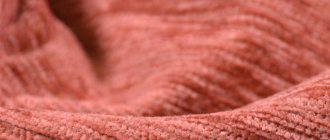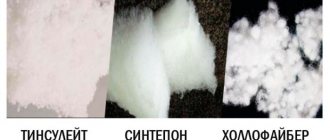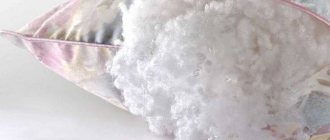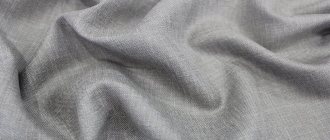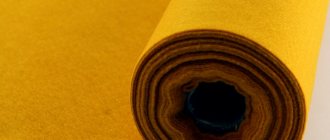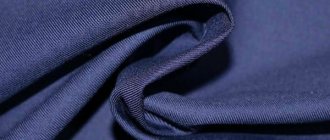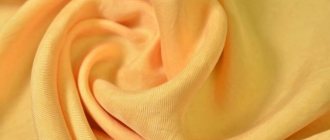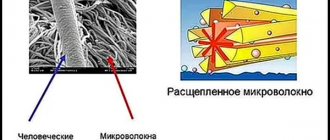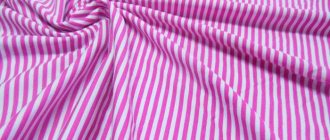| Place | Name | Characteristics in the rating |
| The best natural fillings for down jackets |
| 1 | Pooh | Best warming properties |
| 2 | Feather and down mixture | Easy care. Softness and warmth |
| 3 | Wool | The best combination of price and quality |
| The best artificial fillings for down jackets |
| 1 | Thinsulate | Maximum protection against low temperatures |
| 2 | Isosoft | Warm. Keeps its shape for a long time |
| 3 | Sintepooh | Dries quickly. Doesn't roll down. Does not absorb odors |
| 4 | Holofiber | Lightweight and easy to care for |
The most winter and most pressing issue is the question of choosing outerwear. What will it be: a coat, a parka, a fur coat, a sheepskin coat or a sports jacket? What to choose to avoid freezing? What materials should you pay attention to first? If, due to the small variety of type, shape and color, it is almost impossible for men to get confused when choosing, then the women’s assortment amazes with its breadth. But the most popular type of outerwear was and remains the down jacket, which gained fame back in the late 90s. More recently, it again began to beat the ratings of top stores and showrooms, and not only for women.
The reasonable price of down jackets allows you to change outerwear so often that you can choose the most harmonious one for each look. Easy to care for, you don’t have to worry about washing and often go to the dry cleaner. A large selection of materials, especially fillers, makes this type of product universal, because every buyer will be able to find one suitable for any type of activity: from office work to outings. Insulation materials can be divided into two categories: natural and artificial, each of which has its own disadvantages and advantages. Below is a rating of the best fillings for down jackets.
The best natural fillings for down jackets
Natural fillers are famous for their warming properties and reliability when worn. They have unsurpassed thermal insulation properties that do not allow cold air to penetrate under clothing. Among the disadvantages, one can note an allergic reaction that can occur when worn, caused by organic components. More careful care will also be required so that the item lasts longer, and the internal components do not form a large pile and do not crawl through the upper layers of fabric. This will damage the appearance of the product, whether it is female or male.
Natural materials for filling down jackets
First of all, it's fluff. They use duck, goose, swan, and eider down. It is thanks to this type of insulation that our jackets and coats are called down jackets.
Common to all natural fillers are such advantages as high heat-saving properties and lightness. Down itself is durable, but washing a down item at home is not easy. Disadvantages also include the high cost of the product and, for some of us, the possibility of allergic reactions.
The warmest, and at the same time most expensive, is eiderdown.
. Goose and duck down are more common options. In order to reduce the cost of the product, down is often mixed with synthetic fibers. In addition to the cost, it becomes easier to care for at home; after washing in the machine, they retain their properties and appearance. Natural down requires special conditions during washing.
Down and feather
. Down and feathers are often combined. Such products protect against the cold just as well as down ones. At the same time, their cost decreases, and after washing they better retain their heat-saving abilities and appearance.
Label symbols
Down is denoted by the word “down”, and feathers by “feather”. "Intelligentdown" - a combination of down and synthetic filler. “Cotton” or “polyester” - cotton wool, batting or padding polyester as a filler.
On the label you can find out the percentage of down and feathers. For example, 70/30 or 80/20. For winter, when the air temperature is not lower than minus 10°C, a down jacket with a ratio of 60/40 or 50/50 is suitable.
The properties of the filler also depend on how well the down and feathers are processed. If the label says DIN EN 12934, it means that the down and feathers are well disinfected, washed and dried. It is those manufacturers who do not hide information about processing that can be trusted. Every manufacturer that respects its reputation supplies its products with filler samples and detailed care instructions. When choosing a down jacket with natural filling, carefully inspect the lining and make sure that the feathers do not pierce the fabric.
Wool.
Wool is also used as a filler, but such products are called down jackets only because their appearance is similar to real down jackets. Such things retain heat very well and are cheaper than a natural down jacket, but have a little more weight. Sheep or camel hair is used as wool.
Jackets or coats with wool filling may shrink when washed. To make the product lighter and not shrink when washed, use a combination of wool and synthetic fibers.
The best artificial fillings for down jackets
Artificial fillers, unlike natural ones, are famous for their ease and ease of care. Unique technologies allow you to retain heat for as long as possible, and make the weight of the item insignificant. Special impregnation compositions for fibers will prevent the filler from getting wet in bad weather, but at the same time allow the skin to breathe. This type of insulation is most often chosen by lovers of an active lifestyle who prefer to avoid “puffy” down jackets. The rating will allow you to understand the synthetic variety and choose your favorite.
Description of fabric, composition, cost
Thinsulate consists of a huge amount of the finest (2-5 microns) polyester fibers, twisted in a spiral, treated with silicone, enclosed in a non-woven shell. This allows them to remain smooth. Due to the air that is between the layers, the material retains heat. It has a thickness 60 times less than the thickness of a human hair. It has a total area many times greater than that of other insulating materials and, thanks to this property, is so resistant to frost. The second name for Thinsulate is artificial swan down, which differs from its natural counterpart in better heat retention (50%).
Clothing with Thinsulate filler is quite expensive. A suit for mountain skiing will cost the owner from 10 to 20 thousand rubles, clothes for winter fishing cost from 10 thousand rubles. Prices for winter jackets start from 4 thousand rubles.
Types of Thinsulate
Artificial swan down is divided into several types according to areas of use, thanks to the introduction of additional additives between the main fibers that improve the quality of the fabric:
- Ultra. It has found application as insulation when sewing winter clothes for everyday use, suits for skiing and clothing for tourism. It has a high density and volume.
- Classic. Characterized by lower density, it is used when sewing clothes used in the spring and autumn periods. Has average resistance to frost.
- Flex. It is used when sewing clothes for active sports; it has increased elasticity due to its thin layer.
- Lite Loft. It has a high density and the ability to be compressed several times. Used in the manufacture of equipment (sleeping bags) and clothing for long hikes.
- Ultra Extreme Performance for Footwear is designed for sewing clothing used in extreme conditions.
Rules of care
In order for things with Thinsulate insulation to last a long time, proper care is required:
- wash at a temperature not exceeding 60 degrees;
- Drying in a centrifuge (or using the “gentle mode” function) is undesirable;
- To evenly distribute the insulation inside the product after washing and give it its original appearance, it is recommended to shake it periodically.
Attention! It is forbidden to dry and store jackets near heating appliances; it is not recommended to store them in vacuum bags due to possible deformation; you should not steam items after washing and drying.
The difference between Thinsulate and Holofiber
Holofiber is a synthetic filler made from polyester fiber, thermally bonded into small elastic, springy balls. Apply:
- as insulation in jackets;
- as a filler for pillows;
- as a filler for toys;
- in construction for insulation of spaces between tiles.
Thinsulate is a fabric that holds tightly inside the product, holofiber is a filler that is not fixed, capable of moving inside the item and forming lumps after washing and forming voids in other places. The temperature range of go is much smaller than that of artificial down. Things with such filling are worn at temperatures of -25 degrees, but holofiber is more affordable. When living in an area with relatively warm winters, a jacket or down jacket with holofiber is enough.
Sintepon - the younger brother of fluff
It is difficult to find a person who would never have in his wardrobe clothes with padding polyester filling. Invented in the 70s of the last century, this synthetic material today competes worthy with down.
Products made from padding polyester retain heat well and are easy to wash. And if the thermal insulation qualities of a down jacket are affected by the ratio of feather to down, then the thicker a down jacket made of synthetic padding, the warmer it is. Manufacturers can hem one, two or even three layers of padding polyester. The temperature regime of the product is determined by the density of the synthetic padding insulation: insulation with a density of 100 g/sq. m. recommended at a cool temperature of +5 degrees; from -5 degrees you will be comfortable in a jacket with padding polyester insulation with a density of 150 g/m2. m. (such clothes are quite suitable for late autumn); But with the onset of frosts down to -20 degrees, the best option is a jacket with a padding polyester density of 250 g/m2. m.
If the frost is severe, even a three-layer down jacket will not provide a comfortable walk and you will feel cold. It is worth paying attention that the more layers of synthetic padding in a jacket, the more bulky and inconvenient it is for movement. Remember how clumsy and defenseless little children look in thick padding overalls.
Do not wash glued padding polyester under any circumstances. To care for it, only dry cleaning is suitable.
Sintepon is an artificial material. It consists of polyester fibers. The fibers are fastened together in two ways: either by gluing or by thermal exposure. Sintepon with glue is easily deformed and caked. It is airtight. In addition, it is considered not environmentally friendly due to the presence of glue.
Thermally bonded padding polyester is preferable; it “breathes” and is considered environmentally friendly.
Jackets with synthetic padding are comfortable, durable and easy to care for. However, they are more suitable for the off-season or mild winters. They are of little use for harsh winters.
Down as a natural filler
It is common to use natural down to insulate outerwear. This was even fixed in the name of the things - “down jackets”. To prevent clothing from getting wet and keeping out the cold, its contents must have the property of repelling rather than letting in moisture. Therefore, clothes are filled with down obtained from waterfowl. Most often, duck or goose is used for this, and less often, swan down.
Reference! It is believed that the warmest and most suitable for regions with harsh winters is eider down filling. Products with natural eider down are more expensive than jackets with duck or goose down.
This is interesting: Shervisin - what kind of material is it: insulation production, properties
